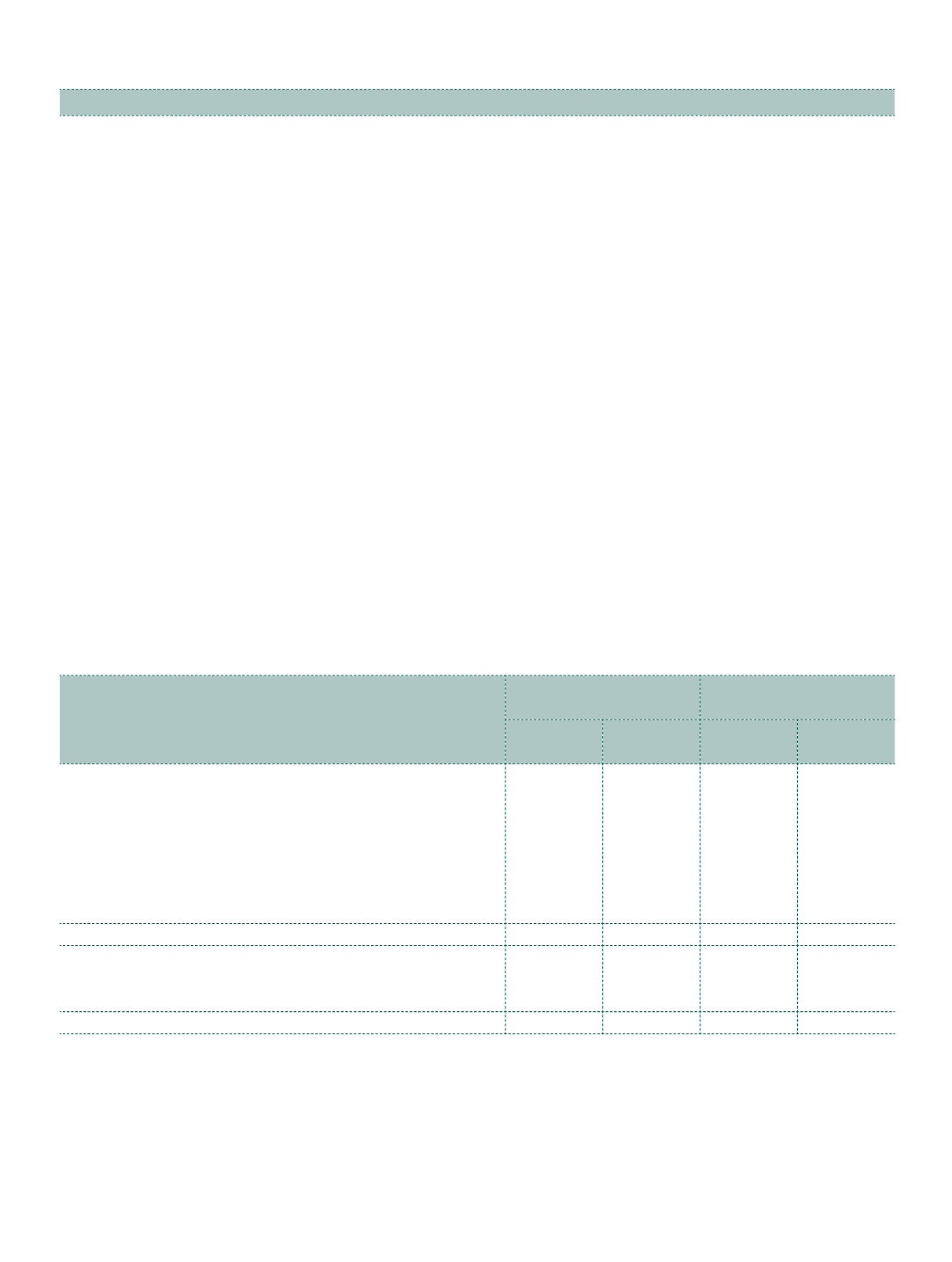

Atul Ltd | Annual Report 2017-18
Note 27.7 Fair value measurements
(continued)
There were no transfers between any levels during the year.
Level 1:
Level 1 hierarchy includes financial instruments measured using quoted prices. This includes listed equity
instruments and mutual fund units that have a quoted price. The fair value of all equity instruments which are traded on
the Stock Exchanges is valued using the closing price as at the reporting period. The mutual fund units are valued using
the closing net assets value.
Level 2:
The fair value of financial instruments that are not traded in an active market (for example over-the-counter
derivatives) is determined using valuation techniques which maximise the use of observable market data and rely as little
as possible on entity-specific estimates. If all significant inputs required to fair value an instrument are observable, the
instrument is included in level 2.
Level 3:
If one or more of the significant inputs is not based on observable market data, the instrument is included in
level 3.
b) Valuation technique used to determine fair value
Specific valuation techniques used to value financial instruments include:
i)
the use of quoted market prices or dealer quotes for similar instruments
ii) the fair value of interest rate swaps is calculated as the present value of the estimated future cash flows based on
observable yield curves
iii) the fair value of forward foreign exchange contracts are determined using forward exchange rates at the Balance
Sheet date
iv) the fair value of foreign currency option contracts is determined using the Black Scholes valuation model
v) the fair value of the remaining financial instruments is determined using discounted cash flow analysis
All of the resulting fair value estimates are included in level 1 and 2.
c) Valuation processes
The finance department of the Company includes a team that performs the valuations of financial assets and liabilities
required for financial reporting purposes, including level 3 fair values.
d) Fair value of financial assets and liabilities measured at amortised cost
(
`
cr)
Particulars
As at
March 31, 2018
As at
March 31, 2017
Carrying
amount
Fair value
Carrying
amount
Fair value
Financial assets
Investments:
Preference shares
5.72
5.72
7.10
7.04
Government securities
0.01
0.01
0.01
0.01
Loans for utilities and premises
7.07
7.07
12.19
13.78
Security deposits for utilities and premises
1.10
1.10
3.27
3.27
Finance lease receivable
1.25
1.25
1.38
1.38
Total financial assets
15.15
15.15
23.95
25.48
Financial liabilities
Borrowings
0.01
0.01
155.23
154.80
Security deposits
19.80
19.80
19.30
19.30
Total financial liabilities
19.81
19.81
174.53
174.10
The carrying amounts of trade receivables, trade payables, other receivables, short-term security deposits, bank deposits with
more than 12 months maturity, capital creditors, dividends receivable, other liabilities (including discount payable) and cash
and cash equivalents including bank balances other than cash and cash equivalents are considered to be the same as their fair
values due to the current and short-term nature of such balances.
The fair values for loans and investment in preference shares were calculated based on cash flows discounted using a current
lending rate.
The fair values of non-current borrowings are based on discounted cash flows using a current borrowing rate. They are
classified as level 3 fair values in the fair value hierarchy due to the use of unobservable inputs, including own credit risk.
For financial assets and liabilities that are measured at fair value, the carrying amounts are equal to the fair values.
Notes
to the Financial Statements


















